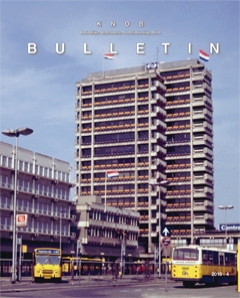Indexering ESCI / Scopus


Kennis en visie: het vak van de architectuur (Marie-Therese van Thoor). Freek Schmidt: De uitdaging van de architectuurhistoricus. Ronald Stenvert: Marges van de bouwhistorie. Roland Blijdenstijn: Van elitaire architectuurgeschiedenis tot laagdrempelige omgevingszorg. Wim Denslagen: Authenticiteit en spiritualiteit. Lex Bosman: Openbaar en particulier. Amsterdamse weeshuizen en hun typologie. Arjen Oosterman: Architectuur en monument.
[No abstract available]
This article deals with the challenges for the architectural historian as formulated by the architectural-historical domain during the past three decades. In 1977 an international symposium took place at Utrecht University in which overtures were made to social sciences. It was seen as a challenge for the architectural historian; he could become a relevant player in questions on ‘high’ and ‘low’ architecture, on preservation and selection in large-scale urban extension, renovation of social housing, increase in the building intensity of city centres and traffic interventions; the...
Although a considerable percentage of the practising building historians have an academic background, the origin of building history lies in the practical preservation of monuments and historic buildings. The listing of thousands of houses around 1975 gave a strong impulse to the then new discipline. Around 1990 building history completed its pioneering phase. ‘Richtlijnen bouwhistorisch onderzoek’ (guidelines for building- historical research) created a framework for practicable research reports for the purpose of restoration.
Because of social developments this discipline –...
In the seventies of the twentieth century architectural history was still chiefly an elitist academic study with much attention for Palladio and Alberti. Current events penetrated only slowly and little attention was paid to ideological questions. Ordinary buildings in their urban structure hardly came up for discussion. In order to change this the course Bouwkunst en Aktualiteit (building and current events) was developed in 1979. It was not received with much enthusiasm. It was considered to be more suitable for the TH (Institute of Technology) in Delft. Preservation of monuments and...
According to Seung The Charter of Venice (1964) was presented as a universal declaration in the field of protection of monuments and historic buildings, but in reality it was steeped in a European spirit. Consequently, this charter does not do justice to specifically eastern values. Western culture, as Seung starts his argument, originated from the Greek and Jewish civilizations, whereas eastern culture is based on China.
There are great differences between these two worlds, but they are nevertheless ignored by the charter referred to, which was based on the range of thought of...
The diversity of religious denominations in the Dutch Republic also had consequences for institutions like orphanages in the seventeenth century. In Amsterdam the various religious denominations also interfered with the care of orphans whose parents had belonged to the religious denomination in question without having been burghers of Amsterdam. Because of the large number of orphanages a comparison of the architecture of these institutions in the seventeenth and eighteenth centuries is interesting. The urban orphanages, closely connected with the town, were by far the largest; in spite...
The relation between architectural history and heritage is ambiguous. Both domains are confronted with rapid changes in scale and complexity, leaving practitioners in both fields with the challenging task to provide new methods and a new vocabulary to enable research and communication. 70 years ago Nicolaus Pevsner could write about Lincoln cathedral and the bicycle shed to discern between architecture and building. These days not only housing and urban development have been accepted as ‘objects’ of research, in fact all material manifestation of human occupation, at least as far as...


open access mogelijk gemaakt door Stichting OpenAccess
